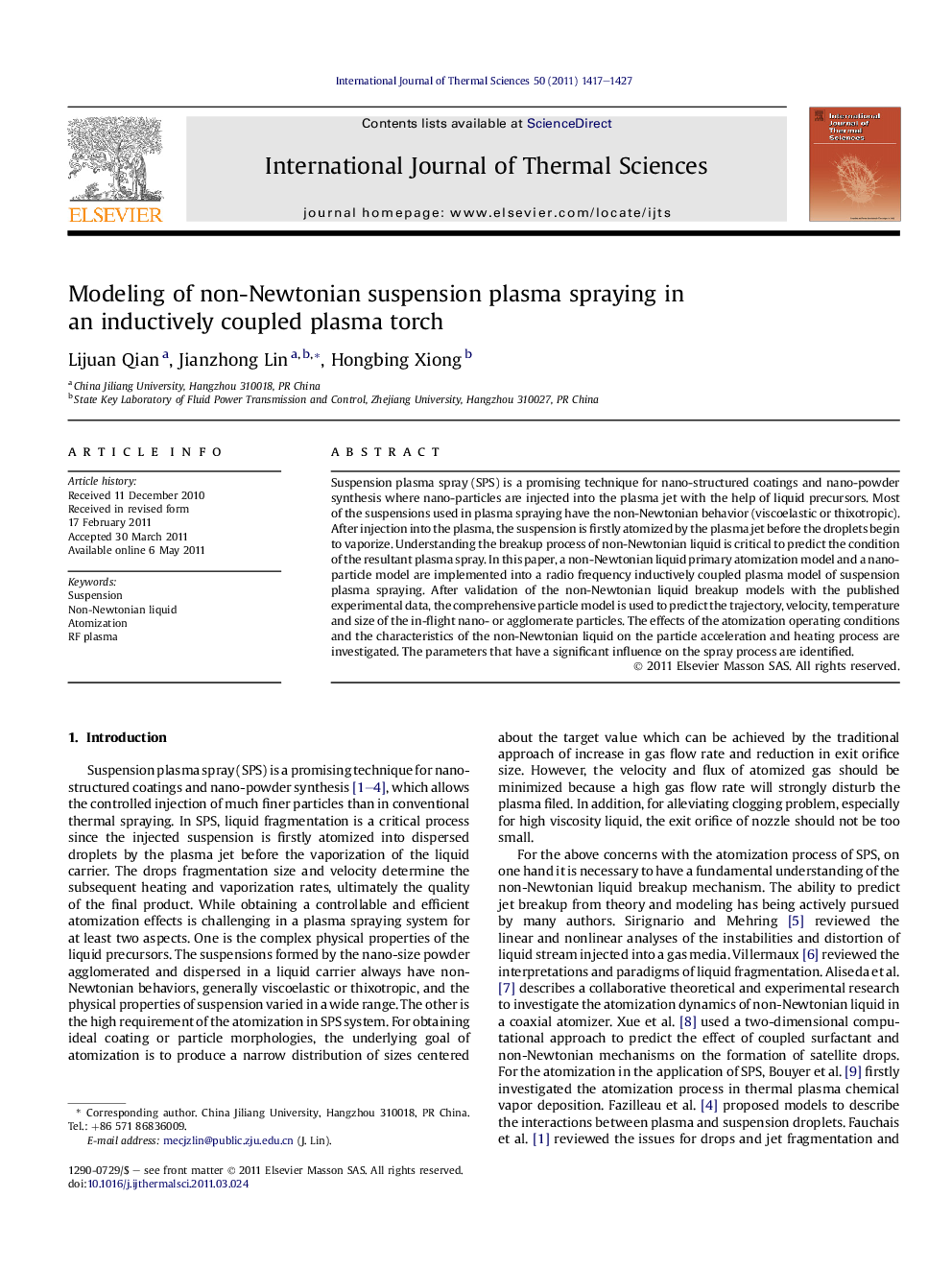| Article ID | Journal | Published Year | Pages | File Type |
|---|---|---|---|---|
| 669279 | International Journal of Thermal Sciences | 2011 | 11 Pages |
Suspension plasma spray (SPS) is a promising technique for nano-structured coatings and nano-powder synthesis where nano-particles are injected into the plasma jet with the help of liquid precursors. Most of the suspensions used in plasma spraying have the non-Newtonian behavior (viscoelastic or thixotropic). After injection into the plasma, the suspension is firstly atomized by the plasma jet before the droplets begin to vaporize. Understanding the breakup process of non-Newtonian liquid is critical to predict the condition of the resultant plasma spray. In this paper, a non-Newtonian liquid primary atomization model and a nano-particle model are implemented into a radio frequency inductively coupled plasma model of suspension plasma spraying. After validation of the non-Newtonian liquid breakup models with the published experimental data, the comprehensive particle model is used to predict the trajectory, velocity, temperature and size of the in-flight nano- or agglomerate particles. The effects of the atomization operating conditions and the characteristics of the non-Newtonian liquid on the particle acceleration and heating process are investigated. The parameters that have a significant influence on the spray process are identified.
